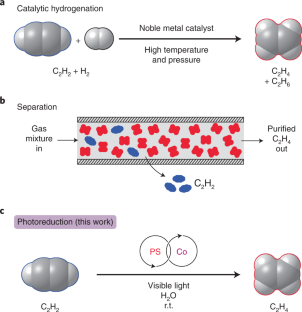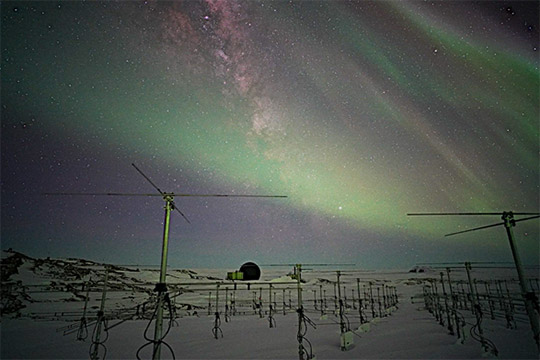新しい戦略は、現在の工業プロセスよりも安価で、エネルギー集約的ではない New strategy is less expensive, less energy intensive than current industrial processes
2022-06-09 ノースウェスタン大学
ノースウェスタン大学の研究チームは、この分野で初めて、光と水を用いてアセチレンをエチレンに変換した。エチレンは、プラスチックの主要成分として広く使用され、非常に価値のある化学物質である。
この変換には通常、高温高圧、可燃性の水素、反応を促進する高価な金属が必要だが、ノースウェスタン大学の光合成に似たプロセスは、はるかに低コストでエネルギー消費も少ない。この新しいプロセスは環境に優しいだけでなく、驚くほどうまく機能し、アセチレンをほぼ100%エチレンに変換することに成功しました。
<関連情報>
- https://news.northwestern.edu/stories/2022/06/photosynthesis-inspired-process-makes-commodity-chemicals/
- https://www.nature.com/articles/s41557-022-00966-5
コバルト分子触媒と水をプロトン源とするアセチレンからエチレンへの選択的可視光応答型光触媒反応 Selective visible-light photocatalysis of acetylene to ethylene using a cobalt molecular catalyst and water as a proton source
Francesca Arcudi,Luka Ðorđević,Neil Schweitzer,Samuel I. Stupp & Emily A. Weiss
Nature Chemistry Published:09 June 2022
DOI:https://doi.org/10.1038/s41557-022-00966-5

Abstract
The production of polymers from ethylene requires the ethylene feed to be sufficiently purified of acetylene contaminant. Accomplishing this task by thermally hydrogenating acetylene requires a high temperature, an external feed of H2 gas and noble-metal catalysts. It is not only expensive and energy-intensive, but also prone to overhydrogenating to ethane. Here we report a photocatalytic system that reduces acetylene to ethylene with ≥99% selectivity under both non-competitive (no ethylene co-feed) and competitive (ethylene co-feed) conditions, and near 100% conversion under the latter industrially relevant conditions. Our system uses a molecular catalyst based on earth-abundant cobalt operating under ambient conditions and sensitized by either [Ru(bpy)3]2+ or an inexpensive organic semiconductor (metal-free mesoporous graphitic carbon nitride) under visible light. These features and the use of water as a proton source offer advantages over current hydrogenation technologies with respect to selectivity and sustainability.



